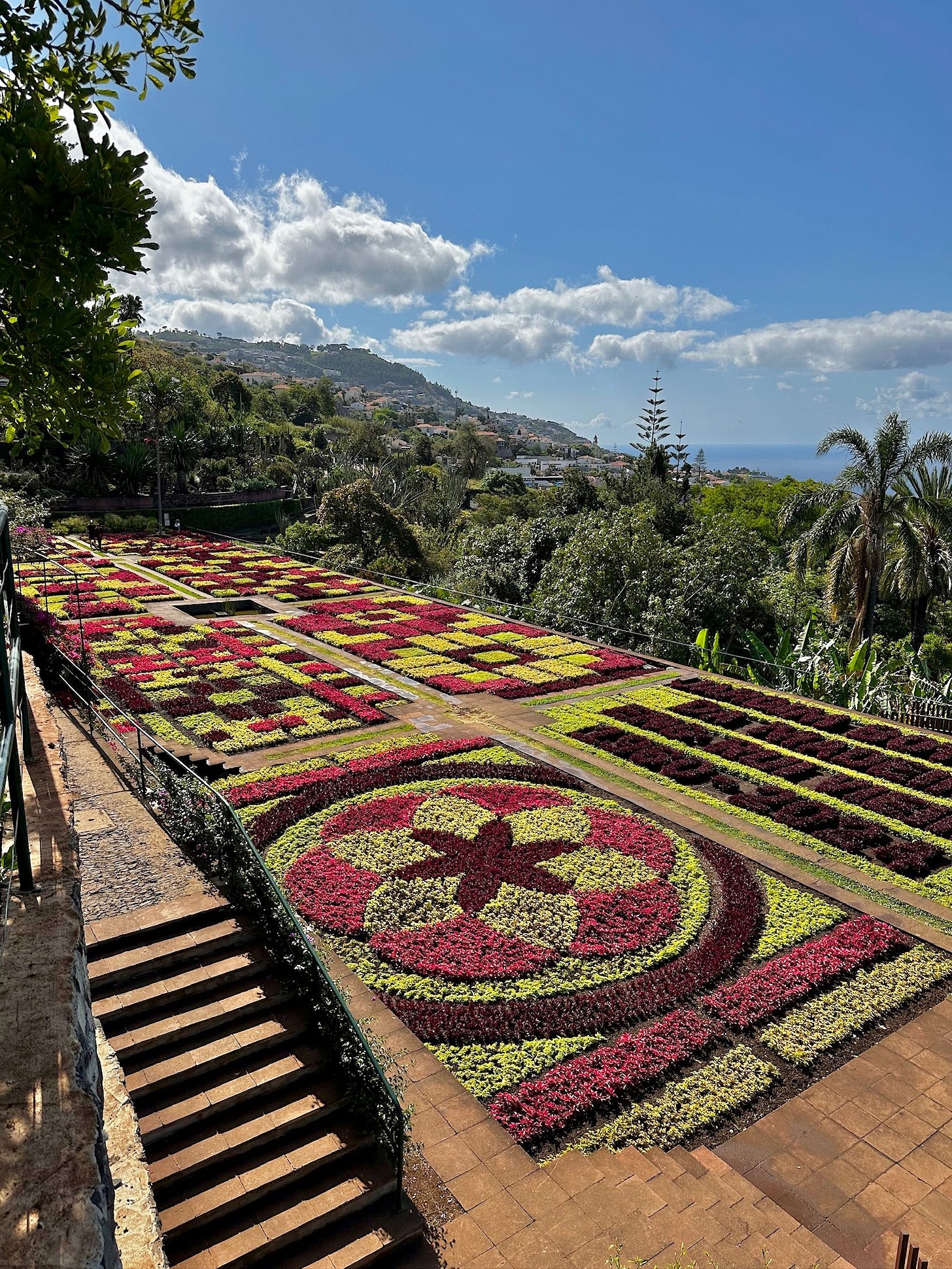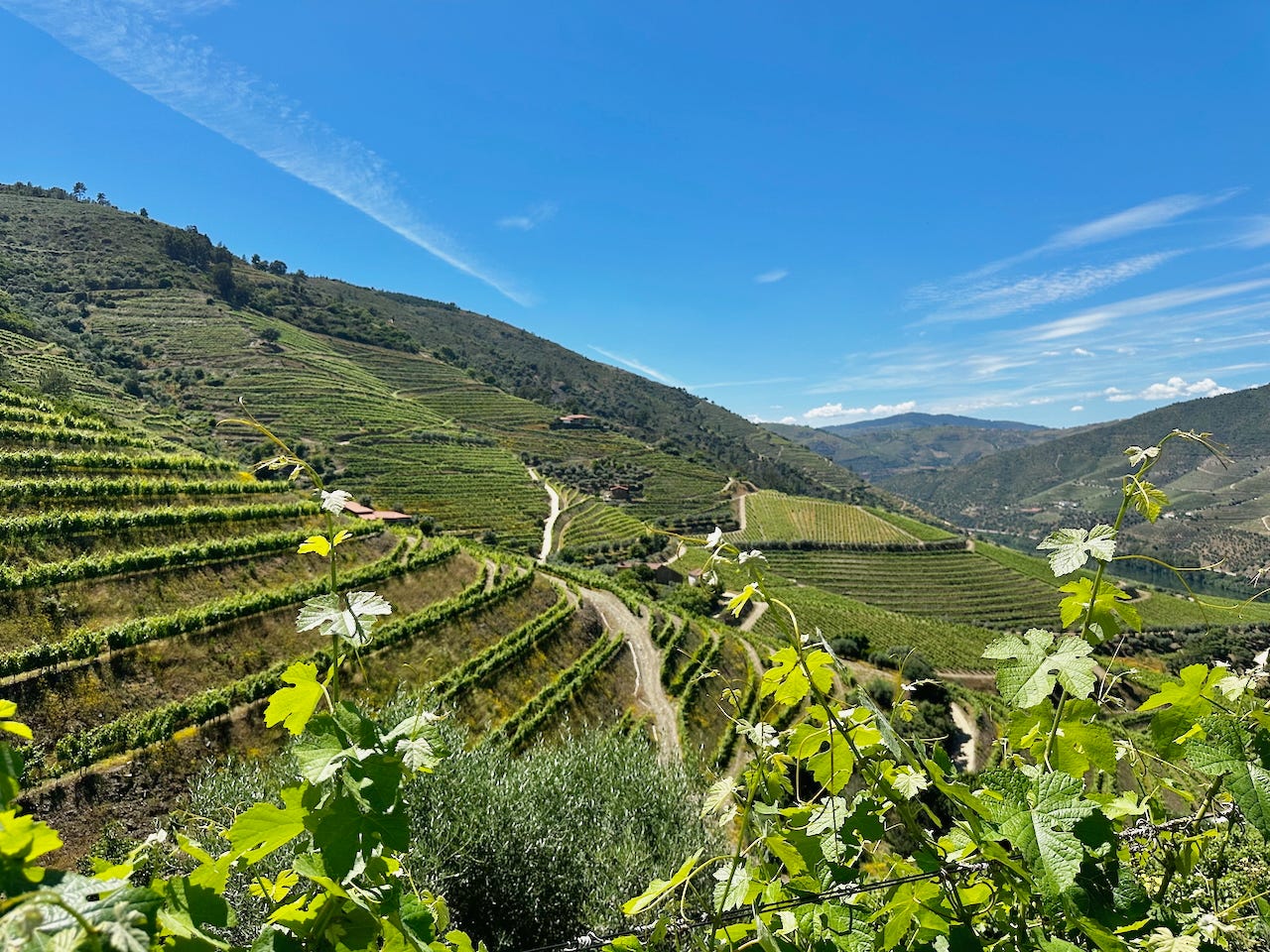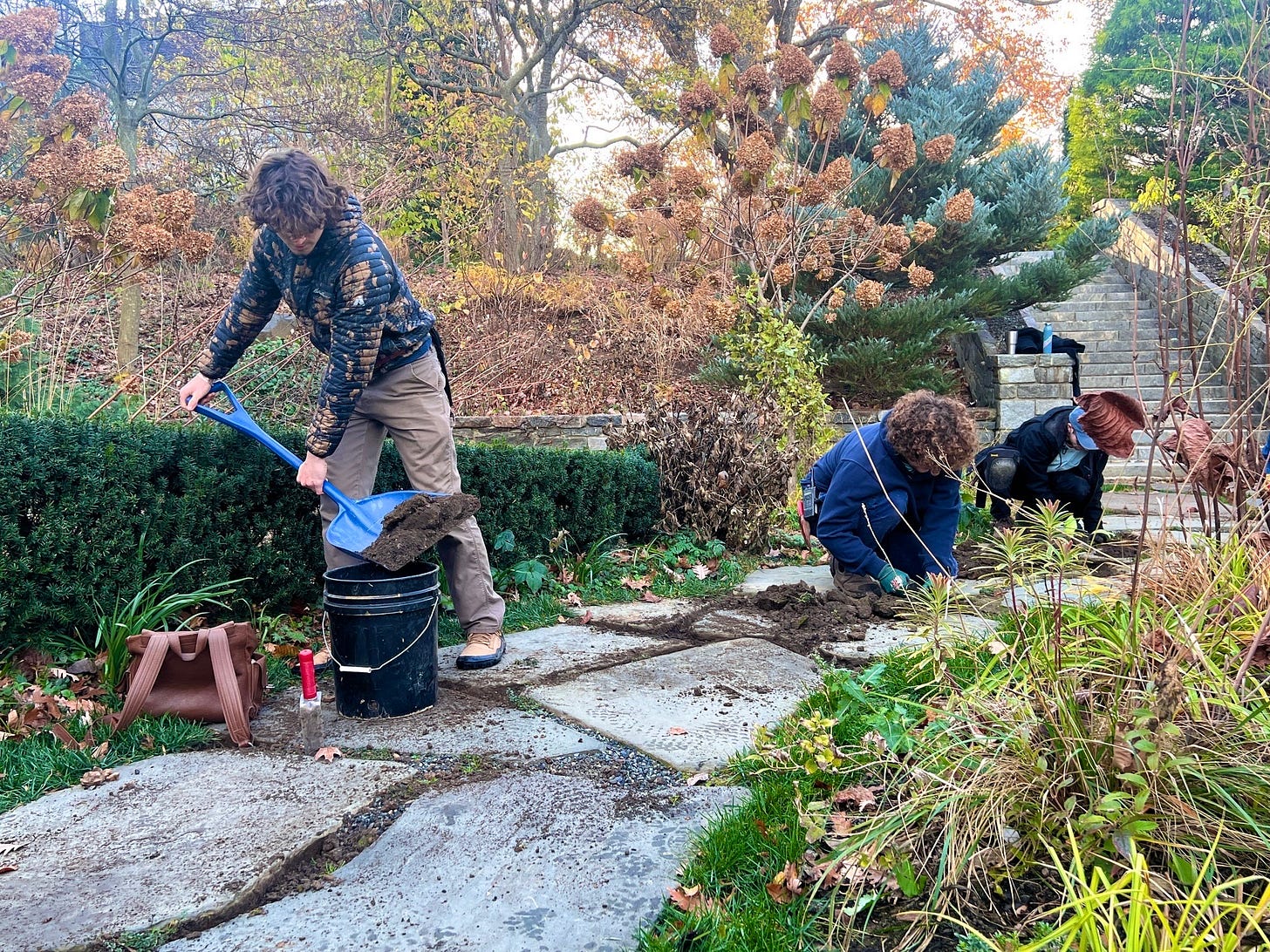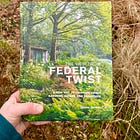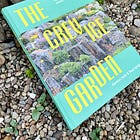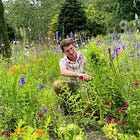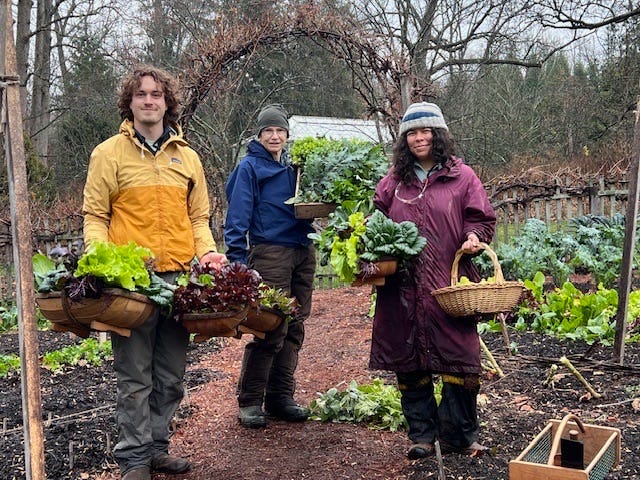
“The lifeblood of horticulture consists of the folks who maintain heritage techniques and continue to encourage the next generation.”
🌿 Noah Meanix, horticulturalist
Highlighting American horticulture
Last year on JWG, I interviewed several different gardeners from the US, such as Grant Hughes, about their own gardening experiences. I am interested in how people come to gardening, and how they adapted ideas to fit their own growing situations and location. This year, I hope to feature a wide variety of professional and hobbyist gardeners to highlight those who are adding to the great and distinct work of American gardening.
Professional Hort Student
First for 2025, we have a detailed inside scope from a young gardener who just finished the Professional Horticultural Program based at Longwood Gardens in Kennett Square, PA:
Noah Meanix grew up with a heartfelt appreciation of nature. After working in high school at a lavender farm in Chester County, PA, he applied and was selected for Longwood Gardens’ Professional Horticultural Program—a two year, immersive and accredited training course in public horticulture and botany. Post Longwood, Noah is continuing his training at Chanticleer Gardens, and confesses that he can't get enough of plants! His life’s goal is to spread a better understanding of nature, and to encourage homeowners, neighbors, and friends to get their hands in the dirt.
Welcome Noah!
Julie: Can you share a bit about yourself? Where are you from? When did you begin gardening?
Noah: Hailing from the rural area of Coatesville, Pennsylvania, about an hour west of Philadelphia, I grew up with a sincere connection to nature. Countless hours of my childhood were spent making forts out of harvested bamboo, traipsing through the woods at Hibernia State Park, and catching frogs and salamanders in the creek behind my home (to be released after I introduced myself of course). I recall always being conscious of how places felt when plant life was well maintained and fitting compared to overgrown or sterile.
In 2020, my junior year of high school, I was itching to get outside away from masks and talk of the news, so I embraced my interests and made a shift from cashier to gardener. For the next two years, I spent time working at a beautiful organic lavender farm called Warwick Furnace Farm, tending to their plant needs as a certain novice. I also supported other local residences in creating and planting gardens. This time of satisfying, autonomous work cemented my intentions to become a professional gardener, but I knew I needed to learn a lot more.
Along came my graduation from high school, and deterred by the costs of traditional colleges, I applied for the Longwood Gardens’ Professional Horticulture Program. Thankfully, I was interviewed, accepted, and began my journey into the depths of great gardening. It was then that I realized how lucky I was to be living in America’s Garden Capital.

Julie: Tell us a bit about the Longwood’s Professional Hort Program. What sorts of experiences did it include?
Noah: In 2022, I was thrilled to begin my time at Longwood. Bright eyed and bushy-tailed, I moved into on-property housing and began my induction into this historic program, which was previously titled the Professional Gardener Program. We operated on an every other day schedule, being instructed by professors and staff members, then rotating through the different sections of the garden to gain hands-on experience. This time proved to be extremely formative and instilled me with the high standards accompanied by the Longwood Gardens brand. My classmates and I digested lectures on topics such as principals of hort, floriculture production, woody plant care and production, learned about ecology and entomology, climbed during our arboriculture class, took part in rigorous plant ID courses, and practiced our public speaking skills. There is almost too much to list in a concise manner since we accrued 55 credits in an accelerated format (transferable to Delaware Valley University, or Temple Ambler University).
The expectations for students in the program are difficult to meet due to the class workload that is maintained while working full days and taking part in events and projects outside of work hours. My classmates all differed greatly in previous experiences, levels of education, and interests, however we all agreed that the experience was a sincere challenge. Work days saw us being met with a plethora of different tasks dictated from a wide array of horticulturists, ecologists, designers, and scientists that are brought together under the Longwood umbrella. As a leading research and collections site, we were exposed to the tissue culture lab, unique plant specimens, and practiced alongside esteemed figures in the field. I recall spending many hours gently de-flasking native Lady’s Slipper orchids (Cypripedium sp.) for Dr. Peter Zale and then bagging them for stratification; a small yet important step in the new and experimental protocol to multiply their populations.
On the design and installation side, the renowned Conservatory had us practicing intense changeovers of massive plantings before the arrival of guests. There is a lot more heavy machine operation than any of us realized, leading to my classmates and I became licensed boom lift operators. Understanding the inner workings of how that space is maintained so intensely is sincerely impressive, and rests on the shoulders of many hard workers. We also got to experience each outdoor landscape section of LW, helping to arrange seasonal displays, and deadheading too many marigolds to count. The team members that make up Longwood are amazingly dedicated to their craft and upholding their sections’ reputation, which was important for me to realize as a young horticulturist.
As a part of our production rotation, we spent many months growing the plants that are then sent to the gardens for display. From potting up thousands of plugs, staking benches of Freesia, or helping to care for priceless bonsai, there is no doubt that our skills were honed again and again. Wax on, Wax off.
During our time as students, we organized three plant sales, one for the holidays, one for spring, and a final sale as part of the Today’s Horticulture Symposium. These helped to hone our public relations skills, on top of practicing the growing and decorating of high quality seasonal plant goods. The proceeds from these sales went towards the study abroad trip that each PH class goes on at the end of the second year. We ventured to Portugal, to embrace more of the Mediterranean climate and see how historical gardens there were being maintained.
As a capstone project, we designed, pitched, and installed three student gardens on display for the public. This tradition has been around for 15 years now, and is an important step towards confidence as a horticultural student. Not only that, but it relies on close teamwork and planning — crucial things to understand about projects.
I hold my experiences from the Longwood program in very high regard. It’s intense, immersive, and engaging, to the point of being nearly all-encompassing for the two year duration. I cannot recommend it to folks whose goals and dedications are misaligned with this rigor, but for those folks that are, man is it worthwhile.
Julie: Is there a group of plants that you particularly enjoy?
Noah: Being the most accessible mountain range near me, I love plants native to the Poconos. Towering above you, eastern hemlocks (Tsuga canadensis), white pines (Pinus strobus), and fabulous deciduous trees like oaks (Quercus sp.) and maples (Acer sp.) make up the canopy. Some mother trees I’ve encountered easily reach 8 foot diameters among their 2-4 ft diameter offspring, which is always impressive to witness. In the understory, mountain laurels (Kalmia latifolia) and Rhododendron sp. create a dense fortress like tangle that I love to explore. Along rivers, there are beautiful ferns, grasses, and sedges that hold the banks, with amazing exposed rock faces. There are meadow clearings full of scrubby bunch grasses that glow with their fall color, and many waterfalls and gorges.
I was first introduced to the particular beauty of these environments by Jeff Jabco, our ‘principles of horticulture’ professor at Longwood. On our visit to his rustic cabin, stilted over a beautiful river and nestled among pines, he toured us around his favorite spots in Hickory Run State Park like the astounding glacially deposited boulder field.
Since that visit in the first year of the PH program, I have ventured on my own to discover the beauty of the picturesque Hawk Falls trails, the dozens of waterfalls at Ricketts Glen State Park, and the beaver-dammed swamp at Thomas Darling Preserve which is as unique as it is small.
I crave preservation for natural areas, regardless of their regionality. I despise the developments that I see being cheaply erected around me, and the plans of certain leaders to reap exponentially more resources from our land. We need to save natural lands and habitats which deliver us clean water and fresh air, as well as intriguing destinations.
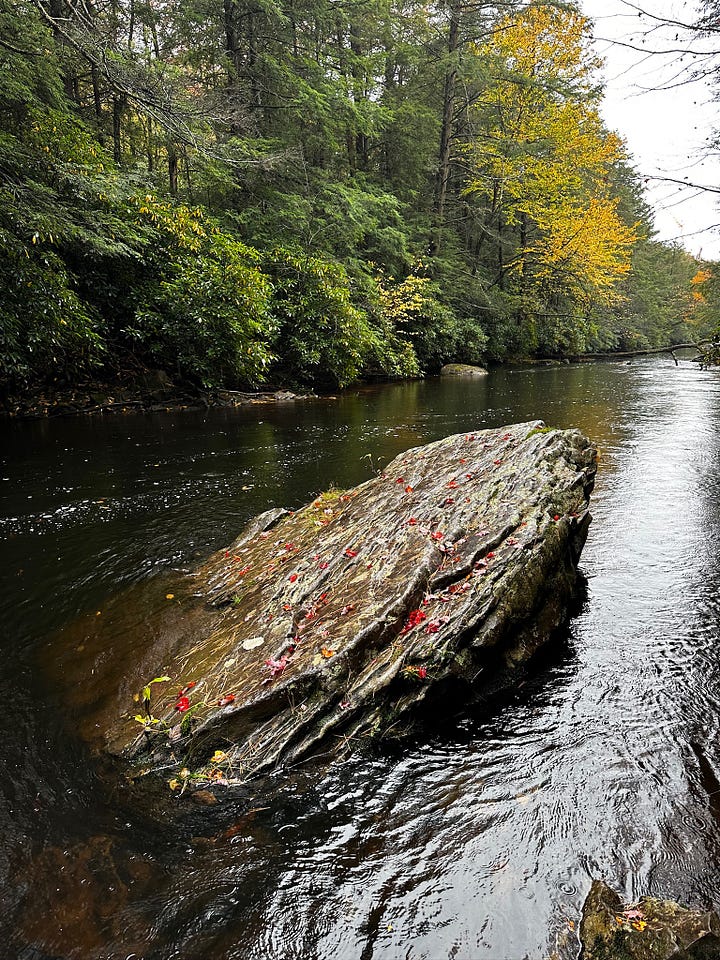
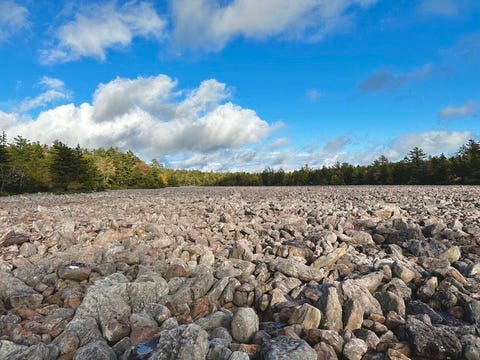
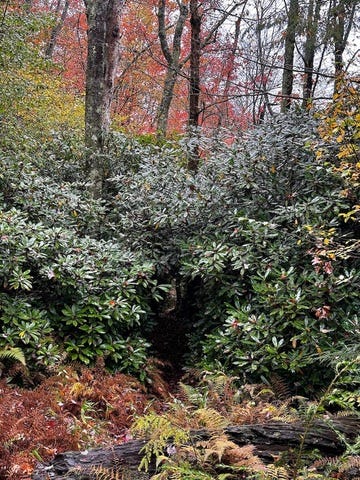
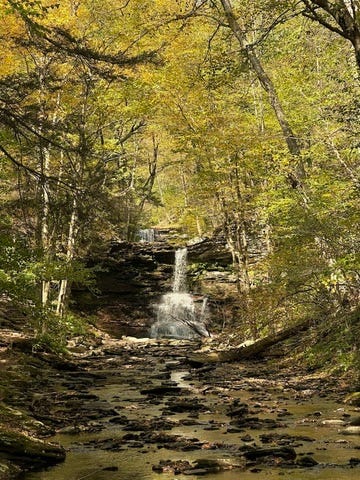
Julie: Which gardens would be included on your list of favorite gardens in the US?
Noah: In April of 2024, I took a trip to the bay area of California which opened my eyes to the beauty held by the mediterranean regions of the world. Long-lived, fragrant herbs, vibrant, alien blooms, and plant life from millimeters wide to hundreds of feet tall. I would recommend to anyone who has the chance to visit: the Ruth Bancroft Garden on the east side of the bay.
While you’re there, check out the Tilden Native Plant Garden. Wow! You’ll experience the most scale difference I’ve ever seen in a garden at Ruth Bancroft, then be able to marvel at the beautiful species that inhabited California before colonization occurred at the publicly funded Tilden Native Garden.
Additionally, the coastal redwoods in Muir Woods are well-known for a reason, and a hike through the gulley of towering giants up into Mt. Tamalpais State Park can reveal four prominent ecosystems of northern california such as redwood forest, oak savannah, chaparral scrub, and serpentine barrens. I found a challenging 13 mile hike that looped through all of these environments with good facilities and friendly folks along the way. It is not for the fainthearted, as it is a 2700’ ascent and descent.
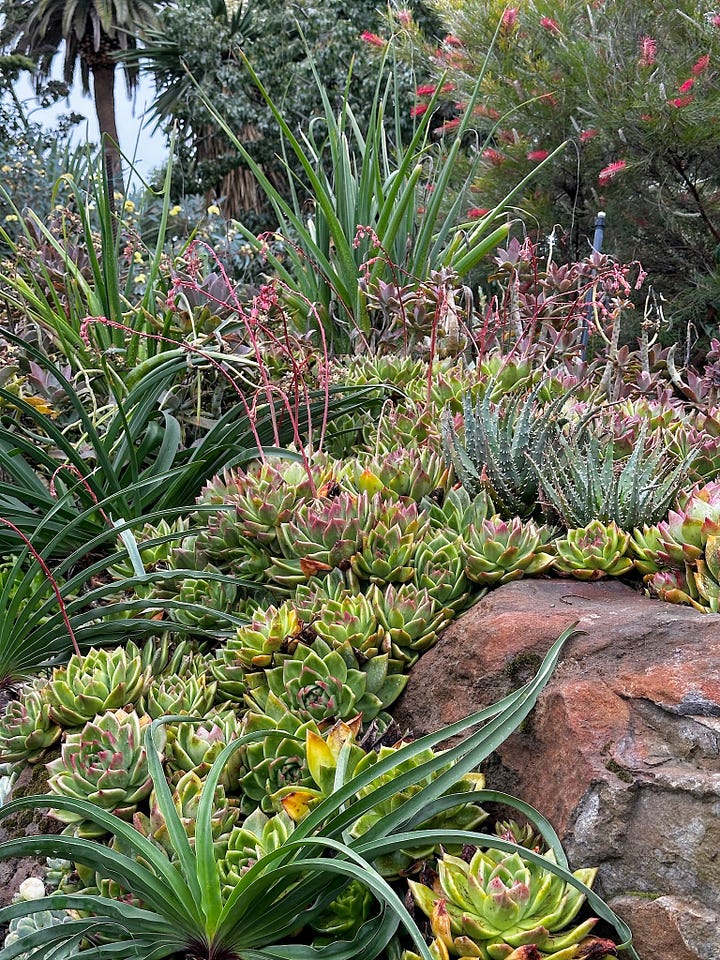

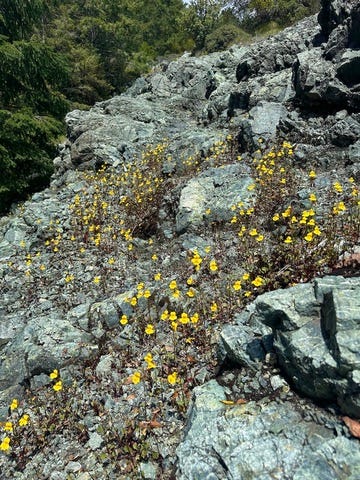
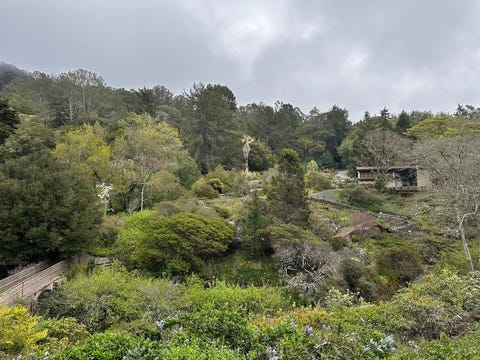
Julie: What do you find enjoyable and/or inspiring about beginning a career in horticulture? How is it challenging?
Noah: What I find inspiring about horticulture is the passion that is intrinsic to the people that make up the field. To be blunt, many projects are underfunded or overlooked. We live with a societal ignorance of the ability for nature to support and inspire us. Our ancestors knew the importance of plants, but modern consumerism has manipulated so much of our outlook on life that our relationship with nature has been reduced to bland produce, plastic silhouettes, floral wallpaper, and nowadays, AI fabrications of greenery.
The lifeblood of horticulture consists of the folks who maintain heritage techniques and continue to encourage the next generation. I cannot think of a gardener who has swayed me from my career. Sure, I’ve been made aware of the trials and tribulations of the modern horticulturist, but we know that with great challenges comes great satisfaction. I think that as far as lifestyle careers are concerned, one which is so closely in tune with the natural world is worth the long days in all weather and tighter salaries. I see horticulturists, ecologists, and environmentalists as sentinels of what makes this Earth not just livable, but enjoyable.
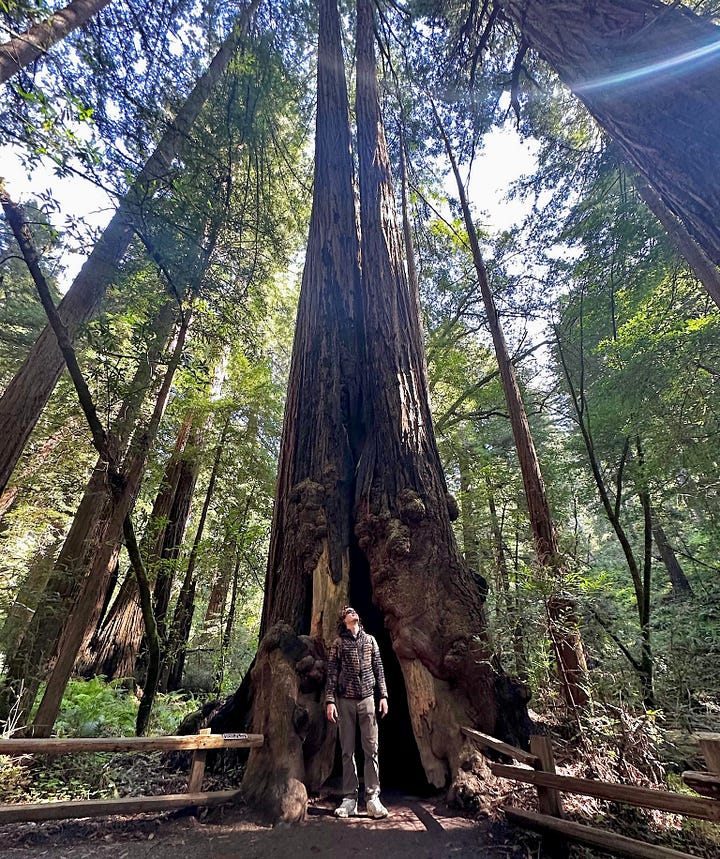

Julie: Where can we learn more about you & your work?
Noah: I’m active on Instagram as a place for me to showcase my day to day life, largely consisting of plant photos from my travels. I’m glad that there is such a bustling community of naturalists and gardeners there. It keeps me hopeful that awareness of our beautiful world can reach anyone and everyone.
I am easy to find on LinkedIn, and my website, NoahMeanix.com. is a work in progress, but offers a chance for you to hire me for consults or designs.
Please approach me at local events or in the garden at Chanticleer this 2025 season if you see me!
“I see horticulturists, ecologists, and environmentalists as sentinels of what makes this Earth not just livable, but enjoyable.”
🌿 Noah Meanix, horticulturalist






